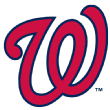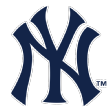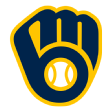It seems hard to believe given that Manny Machado and Bryce Harper only recently signed with their new teams, but baseball's stateside Opening Day is just over two weeks away. There are still a few quality free agents out there -- Dallas Keuchel, Craig Kimbrel, Gio Gonzalez, to name three -- but most of this winter's free agents who move the needle are already signed. Blockbuster trades are relatively rare in the spring, so while we won't know for sure how the season shakes out until October, we can at least make educated guesses about how much teams have improved since the start of the winter.
To get an idea of which teams did the best with the hand they were dealt this offseason (at least in terms of projected 2019 performance), I consulted the ZiPS projection system to calculate the 10 teams that improved the most, relative to their rosters after free agents officially hit the market. Remember, this assumes that the Washington Nationals start without Harper and the Houston Astros without Keuchel because that was literally the starting point from which front offices made their offseason decisions.
 1. Philadelphia Phillies: +10 Wins
1. Philadelphia Phillies: +10 Wins
Phillies principal owner John Middleton impudently commented to the media before the winter that they would not only spend money this offseason but that they would "maybe even be a little stupid about it." It almost didn't happen, however, but then they signed the $330 million deal with Harper after spring training started.
Up until that point, two of the team's biggest offseason improvements came from trades, using minor league depth to pick up J.T. Realmuto and Jean Segura. Losing Sixto Sanchez may hurt in the long-term, but these are real improvements for 2019. David Robertson for $23 million adds a legitimate elite reliever to the bullpen, and while Andrew McCutchen is nearly done, he does upgrade the non-Harper outfield corner.
And Bryce Harper!
 2. Cincinnati Reds: +8 Wins
2. Cincinnati Reds: +8 Wins
I have serious misgivings about whether the Reds have helped the team's trajectory past the 2019 season, but it's hard to deny that Cincinnati has a much sunnier immediate future than it looked in November. While the team has developed the core of a solid offense, in terms of pitching, the rebuild has been a bit of a disaster, with almost every pitching prospect of note having his career sidelined by injury or impeded by major setbacks.
Sonny Gray, Tanner Roark and Alex Wood all come with significant question marks, but this was a rotation that previously looked to have more question marks than a Matthew Lesko informercial. Yasiel Puig is a significant boost to the team's offense.
There is a bit of a trap in the form of the Matt Kemp pickup. This ranking assumes that the Reds go with their best outfield configuration of Jesse Winker-Nick Senzel-Yasiel Puig, with Scott Schebler as a useful fourth outfielder. After two big months in 2018, the yearly Kemp revival once against collided with reality, Kemp being a sub-replacement player after May, resulting in the sixth consecutive season in which he was significantly below a league-average player.
 3. Washington Nationals: +8 Wins
3. Washington Nationals: +8 Wins
Unfortunately for Washington, its offseason improvements are merely restorative, not something that pushes it over the top. But the offseason challenge was to replace the lost Harper production, and in the short-term, the Nationals have largely done that. Among qualifying pitchers in 2018, Patrick Corbin was the second-hardest to make contact against, behind only AL Cy Young winner Blake Snell. Brian Dozier should bounce back to be league average or thereabouts, and Kurt Suzuki and Yan Gomes stabilize a catching position that has struggled since the loss of Wilson Ramos.
Taking a flier on Trevor Rosenthal has upside, with the Nationals having one of the weakest bullpens among the expected contenders. It certainly beats the team's usual tactic of giving away high-upside relievers as they scramble for replacements (Felipe Vazquez, Blake Treinen).
 4. San Diego Padres: +7 Wins
4. San Diego Padres: +7 Wins
On a quantity basis, the Padres didn't make a whole lot of moves this offseason. But one of them was the team's biggest signing ever, bringing in Manny Machado to be the third baseman for the next decade. In hindsight, the team's announcement mid-offseason that it was abandoning the Wil Myers-to-third experiment was the moment the quixotic quest to land a star in free agency became real. The Padres had little at third base; now they have a franchise player there.
In a much less heralded move, the Padres also signed Ian Kinsler as a stopgap as Luis Urias and Fernando Tatis Jr. transition to the majors. This is likely one of the most underrated signings this winter. Even in offensive decline, Kinsler provides Gold Glove-caliber defense at second and the Padres may now field at least an average offensive player at every position. The pitching will likely prevent the Padres from being in wild-card contention this year, but the team is awash in top pitching prospects.
 5. New York Mets: +7 Wins
5. New York Mets: +7 Wins
The Mets had a busy winter, adding Robinson Cano and Jed Lowrie in the infield, bringing back Jeurys Familia and adding Justin Wilson to go along with the return of their former closer. Oh yeah, and they added Edwin Diaz, 2018's second-most-valuable reliever in terms of WAR, behind only Treinen. The Mets even have made a solid stab at getting some certainty behind the plate, bringing in Wilson Ramos at catcher for a reasonable deal.
I'd certainly have liked the Mets to go after Keuchel or another starter so that Jason Vargas isn't actually Plan A as the fifth starter, but the team has improved overall.
 6. St. Louis Cardinals: +5 Wins
6. St. Louis Cardinals: +5 Wins
More than any other franchise in baseball, the Cardinals have been a solid team more than a spectacular one, a team that is strong from top to bottom but generally short on elite talent. They generally don't like making short-term moves, but they made a big one in picking up Paul Goldschmidt from Arizona, giving the team a three-time top-five MVP finisher. (St. Louis hasn't had a player finish in the top five since 2013.) As for Andrew Miller, the team's other big pickup, I think it's far too soon to give up on a pitcher that had been elite for years going into 2018. The ZiPS projections have him as the No. 9 reliever in terms of ERA+ for 2019.
 7. New York Yankees: +5 Wins
7. New York Yankees: +5 Wins
Bringing back J.A. Happ and CC Sabathia ensured that the rotation wouldn't take a large step back from last year's 100-win team. Adding James Paxton gives it more upside, even though there's significant injury risk as part of his package. The Yankees effectively dealt with the Didi Gregorius injury by signing DJ LeMahieu and bringing in Troy Tulowitzki, who is a high-reward play, even if it's very likely that injuries have taken a permanent toll on a player who looked to be on a Hall of Fame trajectory early in his career. Adam Ottavino makes the most unfair bullpen in baseball even better.
 8. Minnesota Twins: +4 Wins
8. Minnesota Twins: +4 Wins
In a way, the Twins may be the most disappointing team on this list. It would be unfair if I said that Marwin Gonzalez and Nelson Cruz don't improve the team's roster, but on a fundamental level I'd have liked to have seen the team do more. After all, Minnesota went after Yu Darvish heavily last winter, and while Darvish obviously was awful and injured in 2018, it suggested the team was willing to go after elite talent in free agency.
Instead, it appears the team payroll, even after adding Cruz and Gonzalez, will go down from last year's $128 million. With Cleveland mostly treading water and ignoring the outfield nearly completely, there's no reason the Twins shouldn't have been at least serious players in the Harper or Machado markets. Joe Mauer's money is better utilized on their new signings, but it's hard to say the Indians should feel much pressure to be more aggressive.
 9. Milwaukee Brewers: +4 Wins
9. Milwaukee Brewers: +4 Wins
I don't believe collusion is actually happening, but if I did, Yasmani Grandal getting only a one-year contract with a mutual option after a .241/.349/.466 season with 24 homers and 3.6 fWAR as a catcher would be the one to set off the klaxons in my head. There's no evidence that Grandal's defensive foibles in the postseason are significant going forward. Manny Pina and Erik Kratz did a better job covering the position than the Brewers had any right to expect, but Grandal is significantly better, and sports, by nature, are a cruel meritocracy.
The return of Mike Moustakas saves the Brewers from a patch job at second base while the team waits for Keston Hiura. Hiura likely will have a very bright future, but in the short-term a contending team can't afford to put all its eggs in the basket that a prospect with two months of Double-A experience represents. Even if Hiura were a Vlad Jr.-level prospect -- and he's not -- a stopgap that can be a role player otherwise isn't the worst idea in the world.
 10. Atlanta Braves: +4 Wins
10. Atlanta Braves: +4 Wins
No, they didn't get Harper or Machado, nor did they appear to ever really seriously consider getting into those markets. But Josh Donaldson was one of the best pickups this offseason and was a five-win player as recently as 2017 (and in just 113 games). It's way too soon to close the book on a player who was at an MVP-level from 2013 to 2016 and half of 2017. It may not work out, but the upside is tremendous.
Nick Markakis remains an adequate stopgap, and while the star-like half-year was a fluke, his left-handed bat and good on-base skills are a decent complement to what the Braves currently have on the roster.
